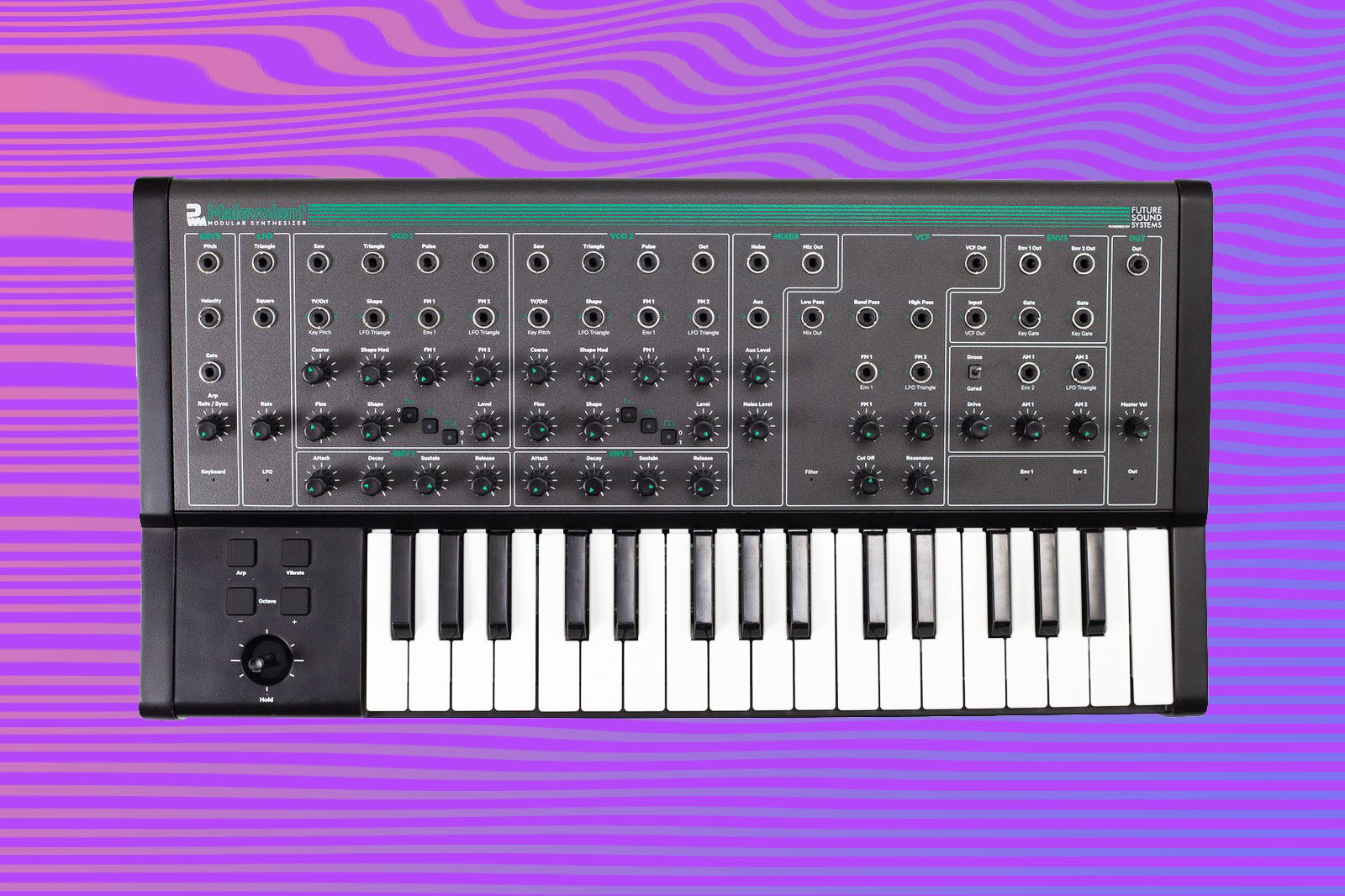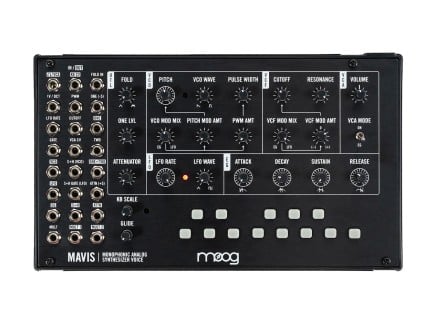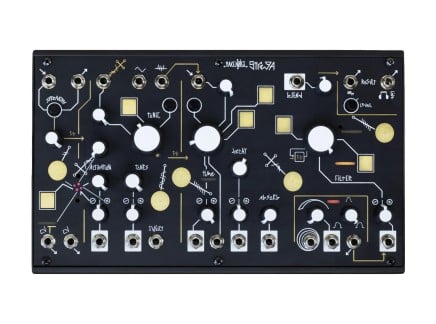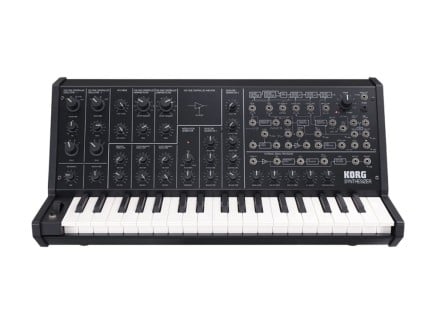After working in the industry for over 20 years, the founder of PWM, Paul Whittington, decided to forge his own way and create electronic instruments that he wished to bring into the world. Developed in collaboration with Future Sound Systems, his first synth is Malevolent, and if we may say so, it's quite a strong first offering. Compact, affordable, and frankly incredible-sounding, the Malevolent is exactly what you want in an entry-level semi-modular synthesizer…or even just for an additional voice in your existing modular system.
As its name might imply, Malevolent's sound is dark, heavy, even downright menacing. It can be dialed back into more subdued tones, but it excels at gritty, distorted, bold, hair-raising tones. So don't let the compact size and mini-keys mislead you…this synth brings plenty of strength and edge along with it.
Fun is a main focus for PWM, and they want to keep everything as enjoyable as possible. It's an instrument and it should inspire you to create, not befuddle you with layers of options and pages of explanation. Malevolent, as you will notice, eschews digital trappings and simply labels everything clearly. Patch it or don't, the semi-modular flexibility gives you the option to take either approach—and the clearly-labeled panel means there's no guessing as to what a particular patch point does. If modular isn't your thing, but you still want a brutal-sounding analog synth to work with your digital environment, then you will love the MIDI options with 5-pin and USB connectivity.
Yea, It's Analog
Sorry to bury the lead there, but yes, Malevolent isn't just semi-modular but also uses analog components for a more organic sound. With circuitry designed by Future Sound Systems, famous for their own gritty, brutal-sounding designs, the Malevolent provides a keyboard-centric take on heavy, fuzzy, snarling analog tones. If you're looking for something like an MS-20 but meaner, you're in the right place.
Analog oscillators and filters do sound different to the trained ear: the slight imperfections can add a wonderful musical quality that you find in most other acoustic instruments. This is one reason so many people like analog electronics—expanding the possibilities of sound by augmenting it with electricity while still being grounded in the constantly fluctuating physical world. Acoustic sound has different properties depending on the weather, the physical space, and the player. While electronic instruments can sometimes make things a little too predictable, with analog electronic instruments there is always a slight deviation which makes the result more special.
The PWM Malevolent features two analog oscillators, which have switches for you to choose the waveforms (saw, triangle, pulse) for the internal normalled signal path. You can choose any or all of these oscillator shapes simlutaneously which will be blended to create a fairly complex waveform. As common with most modular oscillators, you also have direct access to the raw waveforms via patch points. This is valuable if you want to use just one of the three waveforms to perform FM duties, while still blending all three in the normalized path or use one waveform as a sound source with another as a modulation source.
Interestingly, each oscillator shape offers a continuously variable "shape" control, as well as shape modulation—making it possible to create infinite variations on each shape for unique, peculiar sounds. It's also worth noting that the shapes themselves aren't perfect, and each brings with it its own sonic character…and adding the shape modulation introduces a level of nonlinearity which gives the synth much of its characteristic tone. With two of these oscillators on board, there's a lot you can do.
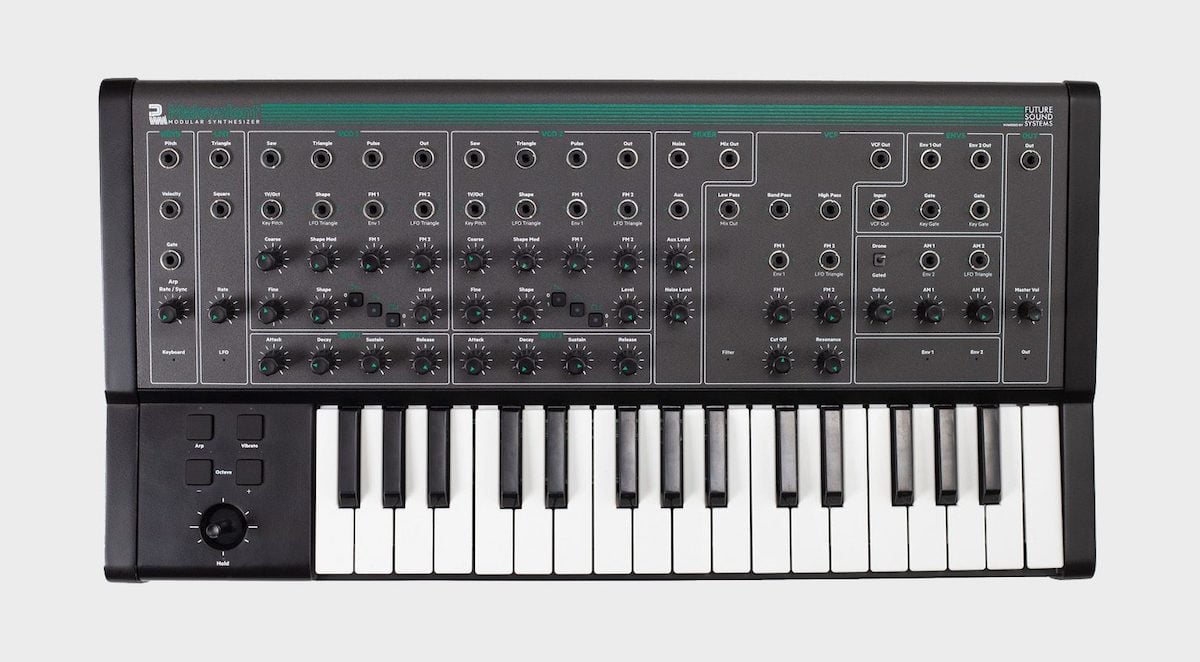
Some might be concerned about analog tuning, but worry not: PWM added temperature compensating chips for added stability. Of course, it's always good practice to let an analog piece of equipment warm up for a little bit. They also added an incredibly helpful tuning option that repeats a note ad infinitum with the octave above and below so you can make sure everything sounds congruous. So, what little bit of analog squirreliness you may encounter is easy to resolve.
Malevolent also features an analog noise source, a mixer with an auxiliary input, and an analog filter with a Sallen-Key topology (similar to the Korg MS-20). The filter features lowpass, bandpass, and hipass inputs (somewhat like a Steiner-Parker filter), with the mixer output normalled to the lowpass input by default. Low pass is the default, but for broader possibilities, patch in the noise, or other direct oscillator outputs to the band pass and high pass to work in conjunction with the low pass filter, creating little crispys, while still giving you some deep phatness.
The filter features two FM inputs, normalled from the first Envelope generator and the LFO's triangle output, respectively. The filter itself can squeal, screech, and snarl—adding an extra level of brutality to the notably raw tone of the oscillators themselves. Everything can (and will!) overdrive, and that's a significant part of Malevolent's sound. After the VCF, the signal passes to a VCA section, with a dedicated drive control and two amplitude modulation CV inputs (one normalled to the output of the second envelope generator).
Modulate Your Modulations
Another great feature of most semi-modular instruments is the ability to patch into various modulation destinations as well as patch out from the included modulation sources (i.e. envelopes and LFOs). The instrument features a pre-wired, normalled signal path by default…but by using patch cables, you can override the normalled connections to create your own custom signal paths and opportunities for interaction. On the PWM Malevolent, the normalled signal connections are shown under the patch points in gray text and for the most part, you can get away with using these without having to patch anything. If you want to push the boundaries, however, patching is the way to go.

The dedicated modulation sources, of course, are an obvious choice for re-patching. The keyboard's pitch, velocity, and gate outputs can be patched to control any aspect of the sound. The built-in LFO offers both triangle and square shapes, which can be freely routed throughout the instrument; and of course, the two ADSR envelope generators offer dedicated CV outputs and Gate inputs, making it possible to use them to control anything and to be triggered by sources other than the keyboard, such as the built-in LFO, external sequencers, and more.
A unique option on the two oscillators of the Malevolent is the presence of two discrete FM inputs each with their own attenuators. This can open up the gnarly, gritty sonic possibilities by patching the noise generator or other oscillator into the FM inputs, instead of the normalled EG and LFO. The filter section also features two FM inputs, which allows you to do similar things—and with the resonance cranked, you can get some truly wild sounds.
The Joy Sticks With You
Most standalone synthesizers will feature a modulation wheel and a pitch bend wheel. The Malevolent does away with this in favor of a single joystick that can be used to control vibrato as well as pitch bend. While slightly unusual, this is actually more intuitive and only requires a single moveable part to control several parameters. This joystick also transmits MIDI data when plugged into a computer or piece of hardware.

That's right, this analog synthesizer also has a separate digital path that lets you use it as a MIDI controller or transmit MIDI information to to the Malevolent and sequence it with your software. Or you can use this in conjunction with your larger modular system and the Malevolent becomes a very capable MIDI-to-CV converter. On top of that, you can actually power the synth from the USB-C port. Additionally, its digital control innards allow for the inclusion of arpeggiator functionality. Pretty rad.
Benevolence Towards the Malevolent
The semi-modular market has been ramping up, which is great. This means more options, better value, and unique innovations that can help anyone interested in modular synthesis get into it easily and without needing to drop a huge amount of money.

With the PWM Malevolent, you don't need to make any sacrifices or compromises: you have a keyboard, you have MIDI in/out and USB-C, you have an arpeggiator, and you have a plethora of patch points to keep you occupied for hours. Synthesizers can be simple without sacrificing great sound, and the Malevolent proves that—electronic music can be quick, fun, and PWM aims to ensure all their instruments are designed with that in mind.

